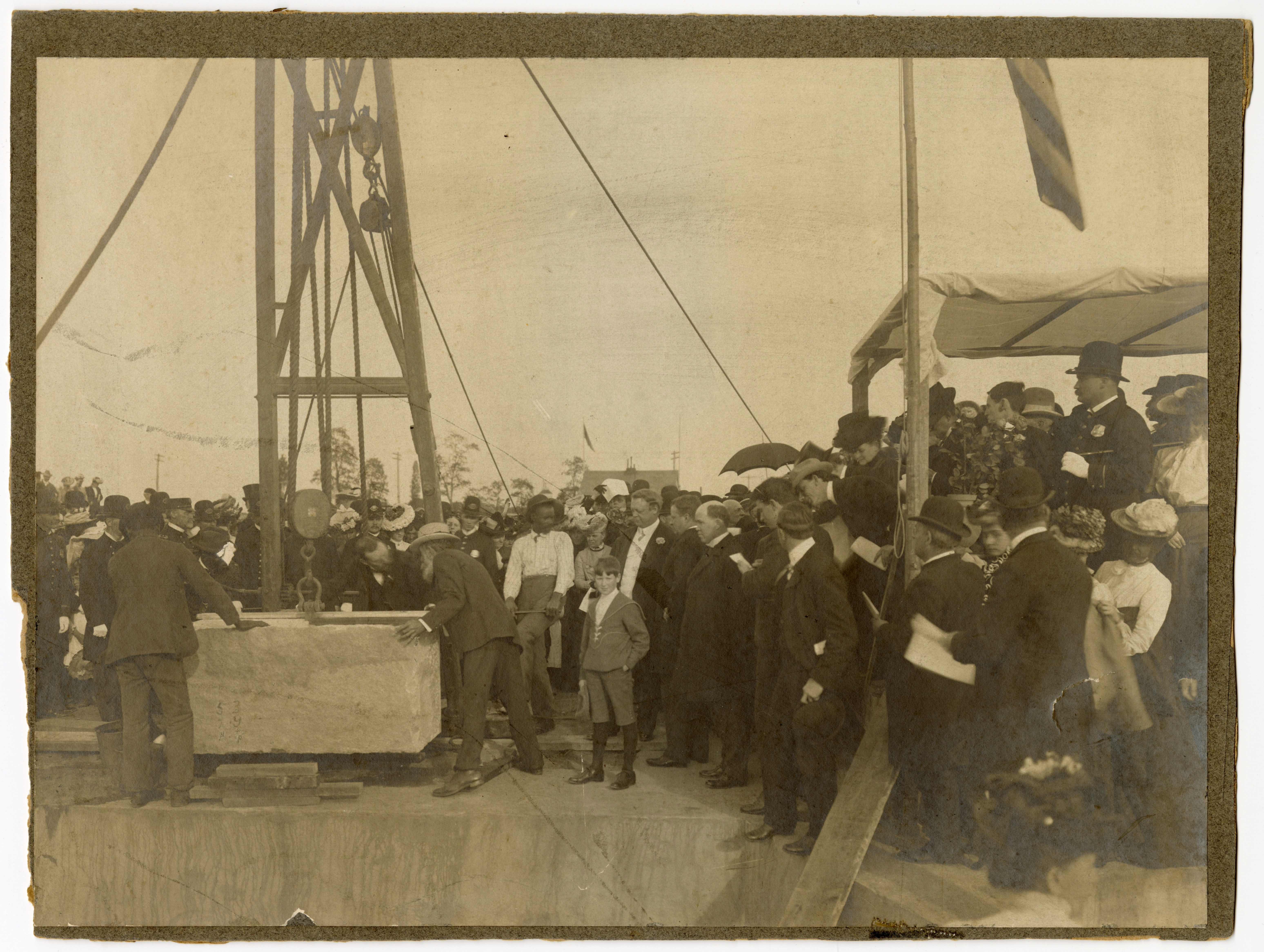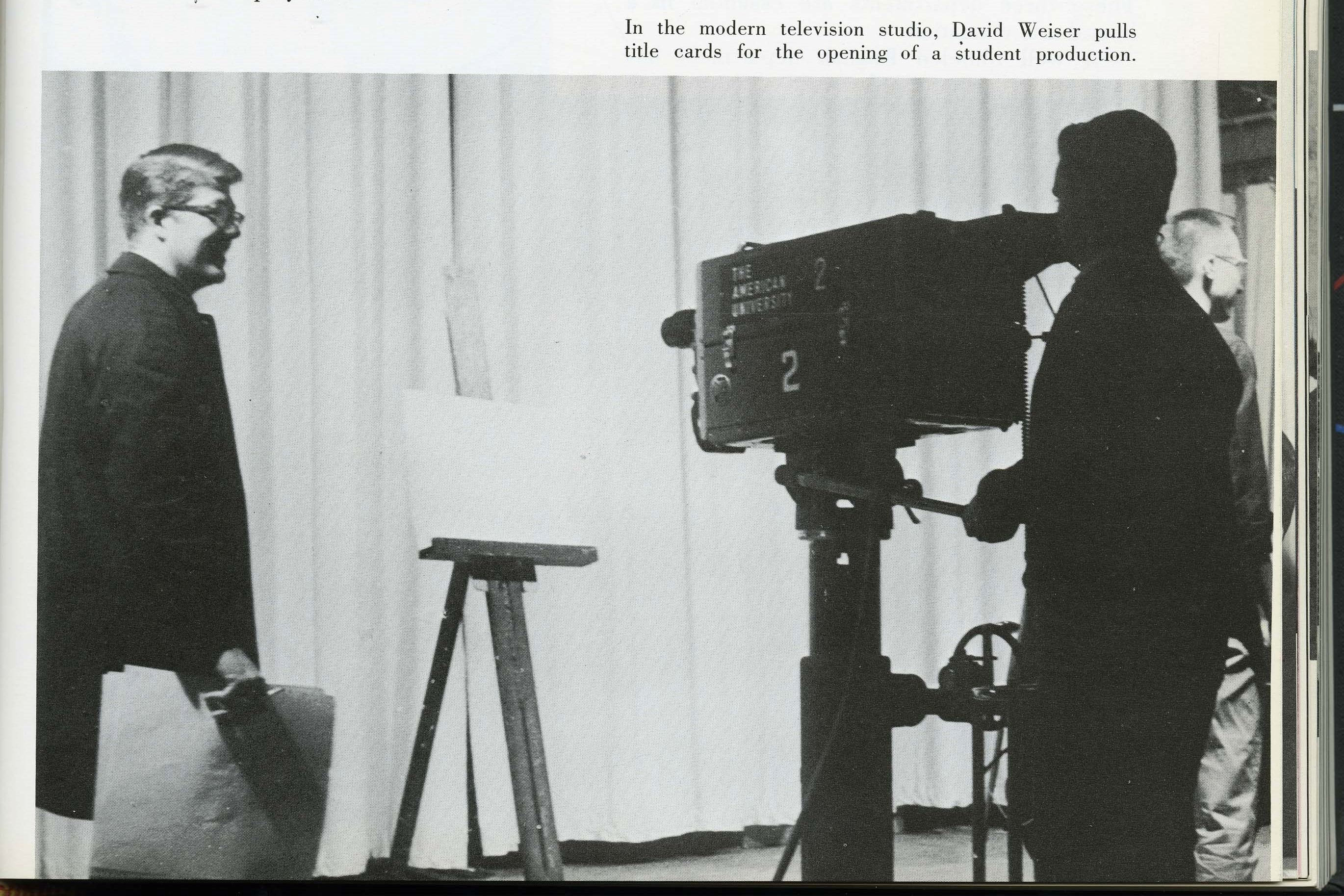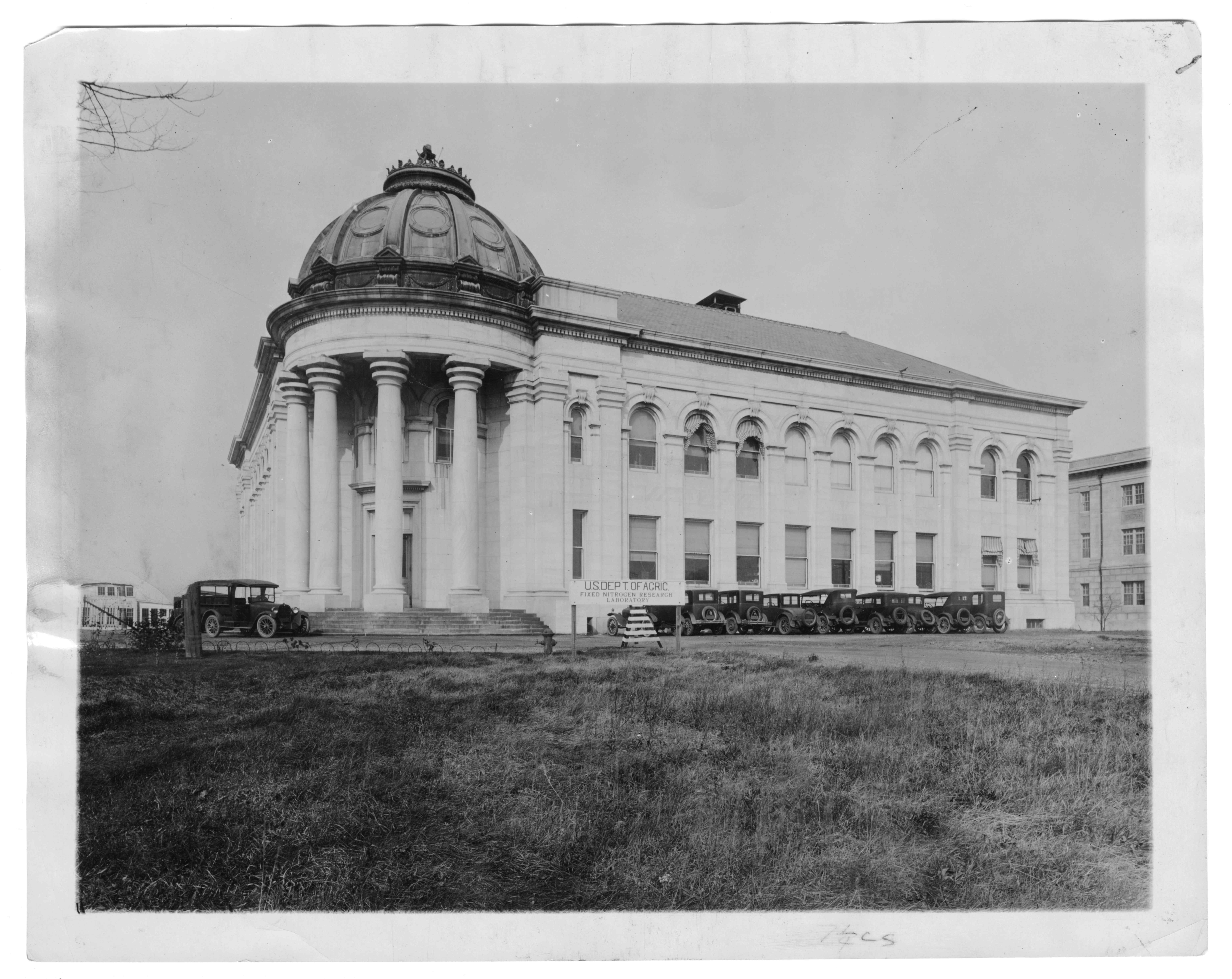9 School of Communication (McKinley Building)
AU was home to two US army camps during World War I.
Before the McKinley Building—the second-oldest on campus—was home to the School of Communication, it was known as the Ohio Building. The cornerstone was laid in 1902 during a ceremony attended by President Theodore Roosevelt. By then, the building’s name had changed to honor President William McKinley, who was assassinated the year before.
Due to budget constraints, the building sat unfinished until the US entered World War I in 1917. When AU offered it to the US Army for use as a training facility, the government paid to complete the renovations. The Army established two camps on campus: Camp American University and Camp Leach. The campus was mainly utilized by the Engineer Officers’ Reserve Corps, who established a training camp on the university grounds, along with camouflagers, foresters, and the science laboratories of the Bureau of Mines, which worked out of McKinley until 1919.
After WWI, the USDA Fixed Nitrogen Research Laboratory used the building from 1920–1941. Then the Chesapeake and Potomac Telephone Company moved in from 1941–1954. McKinley was not used for academic purposes until 1955 and housed several departments before becoming home to SOC. After its most recent renovation in 2014, McKinley was LEED Gold-certified in 2015.
SOC, which became an independent school in 1993, is home to the mass communication, media studies, and journalism departments. AU has had a communication department since its founding and offered journalism courses, as well.

President Theodore Roosevelt helping place the cornerstone at the McKinley cornerstone dedication ceremony, 1902

David Weiser pulls title cards for the opening of a student production in the American University communications program, 1964

McKinley Building housing the Fixed Nitrogen Research Laboratory, 1924